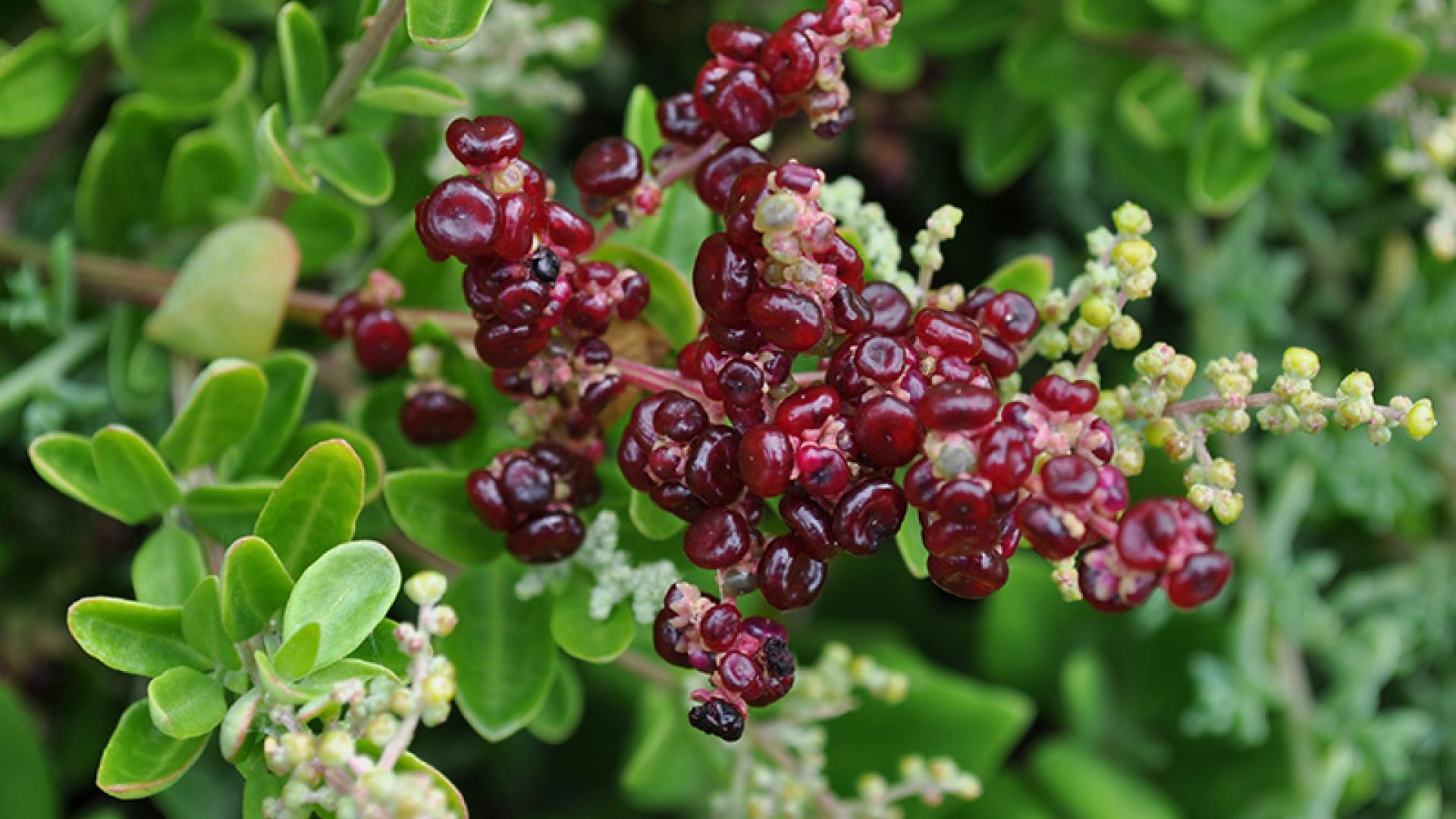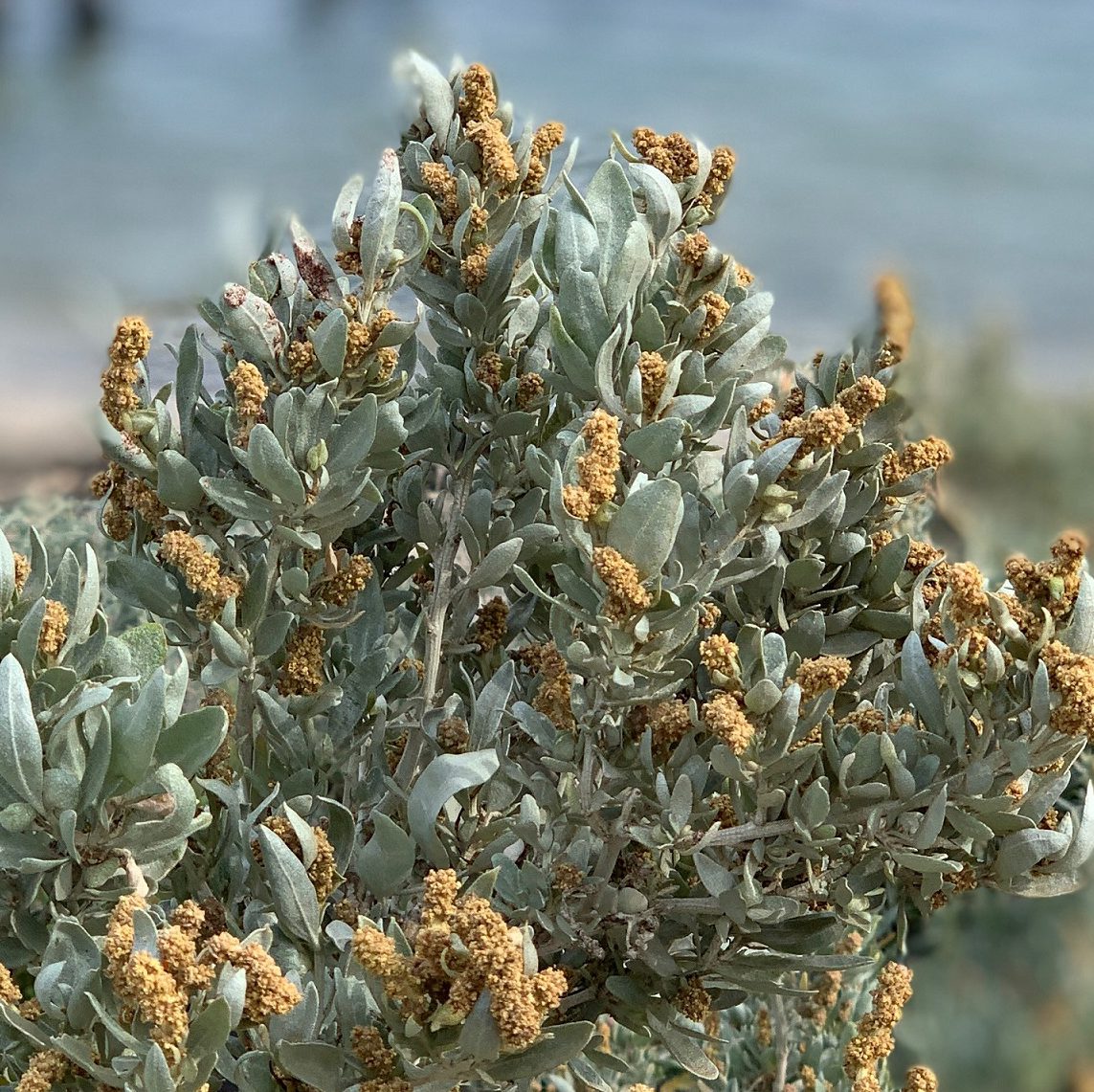
Saltbush: A Native Australian Treasure with Culinary and Ecological Bounty
Australia, a continent defined by its ancient landscapes and unique biodiversity, is home to a remarkable array of native plants. Among these, the Saltbush family (family Chenopodiaceae, now largely integrated into Amaranthaceae) stands out as a resilient and incredibly versatile group of shrubs and sub-shrubs. Their ability to thrive in arid and saline environments, often considered inhospitable to other flora, has cemented their importance in the Australian ecosystem and, increasingly, in its culinary landscape. This article delves into the multifaceted uses of native Saltbush, exploring its ecological significance, traditional Aboriginal uses, and its burgeoning role in modern Australian cuisine.
The Resilience of Saltbush: Adapting to Arid Australia
The defining characteristic of Saltbush is its remarkable tolerance to salt and drought. These plants have evolved a sophisticated array of adaptations to survive and flourish in Australia’s harsh conditions. Many species possess specialized glands on their leaves that excrete excess salt, preventing it from accumulating to toxic levels within the plant. This salt can then be washed away by rain, or in some cases, the plant will shed its salt-laden leaves. This physiological marvel allows them to colonize saline soils, coastal areas, and arid inland regions where other plants would quickly perish.

Their deep root systems are another crucial adaptation, enabling them to access moisture from deep underground. The silvery-grey foliage, a common visual trait across many Saltbush species, is not just aesthetically pleasing but also serves a purpose. The fine hairs on the leaves reflect sunlight, reducing heat absorption and minimizing water loss through transpiration. This combination of adaptations makes Saltbush a cornerstone of many Australian ecosystems, providing vital food and shelter for native wildlife, including kangaroos, wallabies, and a diverse range of birds and insects.
Ecological Importance: More Than Just a Pretty Plant
The ecological value of Saltbush cannot be overstated. In arid and semi-arid regions, they are crucial for:
- Preventing Soil Erosion: Their dense growth habit and extensive root systems help to stabilize the soil, preventing wind and water erosion, particularly in fragile landscapes prone to desertification.
- Improving Soil Health: As they grow and shed leaves, Saltbush contributes organic matter to the soil, improving its structure and fertility. Their ability to tolerate saline soils also means they can help to reclaim degraded land.
- Providing Habitat and Food for Wildlife: Saltbush leaves are a nutritious food source for many native herbivores. Their dense foliage offers protection from predators and harsh weather conditions for a variety of animals.
- Supporting Biodiversity: By creating microclimates and providing essential resources, Saltbush plays a vital role in supporting the overall biodiversity of Australian ecosystems.

Traditional Aboriginal Uses: A Legacy of Sustenance and Medicine
For millennia, Indigenous Australians have possessed an intimate understanding of Saltbush and its manifold uses. Long before European settlement, Aboriginal peoples recognized the nutritional and medicinal properties of these plants, incorporating them into their diets and traditional healing practices.
- Food Source: The seeds of many Saltbush species are a valuable source of protein and carbohydrates. They were traditionally harvested, ground into flour, and used to make damper (a type of unleavened bread) or other simple baked goods. The leaves themselves, when young and tender, could be eaten raw or cooked as a vegetable. Some species were also used to flavor water.
- Medicinal Properties: Various parts of the Saltbush plant were used for medicinal purposes. Poultices made from crushed leaves were applied to wounds and skin irritations to aid healing and reduce inflammation. Infusions of leaves were sometimes used to treat digestive ailments. The salt excreted by some species was also used in various traditional remedies.
- Tool and Material Use: In some instances, the wood of Saltbush was used for making tools or for fuel.
The knowledge of these traditional uses highlights the deep connection between Indigenous Australians and their environment, a connection that is increasingly being rediscovered and respected.
Saltbush in Modern Australian Cuisine: A Culinary Renaissance
In recent years, Saltbush has experienced a remarkable resurgence in popularity, moving from its traditional roles to become a sought-after ingredient in modern Australian cuisine. This culinary renaissance is driven by a desire for unique, native flavors and a growing appreciation for sustainable, locally sourced produce.
Chefs and home cooks alike are discovering the subtle yet distinctive taste of Saltbush. The leaves, when fresh, offer a slightly salty, herbaceous flavor with a hint of minerality. This natural saltiness means that dishes often require less added salt, making it a healthier alternative. The texture of the leaves can range from tender and succulent when young to slightly leathery when mature, offering diverse culinary applications.
Culinary Applications of Saltbush:
- Fresh Salads: Young, tender Saltbush leaves can be added to salads, providing a unique salty crunch and herbaceous notes. They pair well with citrus dressings, grilled vegetables, and seafood.
- Cooked Greens: Like spinach or silverbeet, Saltbush leaves can be sautéed, steamed, or added to stews and curries. Their flavor intensifies when cooked, lending a savory depth to dishes.
- Flavoring Agent: Finely chopped Saltbush leaves can be used to infuse oils, vinegars, or butter with their distinctive flavor. They can also be incorporated into rubs for meats and seafood.
- Garnish: Crispy fried Saltbush leaves make an attractive and flavorful garnish for a wide range of dishes, adding a delicate salty crispness.
- Seed Flour: The ground seeds can be used in baking, adding a nutty flavor and protein boost to breads, muffins, and crackers.
Key Saltbush Species and Their Culinary Notes:
While there are many species of Saltbush, some of the most commonly used in culinary applications include:
- Old Man Saltbush (Atriplex nummularia): This is perhaps the most well-known and widely cultivated Saltbush for culinary purposes. Its large, fleshy leaves have a pleasant salty flavor and are versatile in cooking.
- Berry Saltbush (Atriplex semibaccata): Known for its small, edible berries, this species also offers palatable leaves.
- Creeping Saltbush (Atriplex vesicaria): Another common species, its leaves can be used similarly to Old Man Saltbush.
Challenges and Opportunities in Cultivation and Sourcing:
While Saltbush is naturally abundant in many parts of Australia, its commercial cultivation for culinary purposes is still developing. Challenges include:
- Harvesting and Processing: Sustainable harvesting practices are crucial to ensure the long-term health of wild Saltbush populations. Cultivation requires careful management to optimize leaf production and quality.
- Shelf Life: Fresh Saltbush has a relatively short shelf life, necessitating efficient distribution channels or innovative preservation methods like drying or freezing.
- Consumer Education: Many consumers are still unfamiliar with Saltbush, requiring education about its taste, uses, and health benefits.
Despite these challenges, the opportunities are immense. As the demand for native Australian ingredients grows, Saltbush offers a sustainable and flavorful addition to the nation’s pantry. Its ability to grow in marginal lands also presents an opportunity for regenerative agriculture and a diversified rural economy.
Recipes Featuring Saltbush:
Here are a few simple recipes to get you started on your Saltbush culinary journey. Remember to source your Saltbush from reputable suppliers or ensure you are harvesting sustainably and legally.
Saltbush Recipes
1. Simple Sautéed Saltbush with Garlic
This is a fantastic way to experience the pure flavor of Saltbush leaves.
Yields: 2 servings
Prep time: 5 minutes
Cook time: 5-7 minutes
Ingredients:
- 2 cups fresh Saltbush leaves, washed and patted dry
- 1 tablespoon olive oil or butter
- 1 clove garlic, thinly sliced
- Pinch of black pepper (optional, as Saltbush is naturally salty)
Instructions:
- Heat the olive oil or butter in a frying pan over medium heat.
- Add the sliced garlic and sauté for about 30 seconds until fragrant, being careful not to burn it.
- Add the Saltbush leaves to the pan. Stir-fry for 3-5 minutes, or until the leaves are wilted and tender.
- Season with a pinch of black pepper if desired. Taste before adding any salt, as the Saltbush will likely provide enough.
- Serve immediately as a side dish.
2. Saltbush and Feta Dip
A refreshing and flavorful dip perfect for crackers or crudités.
Yields: Approximately 1.5 cups
Prep time: 10 minutes
Chill time: 30 minutes
Ingredients:
- 1 cup fresh Saltbush leaves, finely chopped
- 200g feta cheese, crumbled
- 100g cream cheese, softened
- 1 tablespoon lemon juice
- 1 teaspoon grated lemon zest
- 1 small clove garlic, minced (optional)
- Pinch of black pepper
Instructions:
- In a medium bowl, combine the finely chopped Saltbush leaves, crumbled feta cheese, and softened cream cheese.
- Add the lemon juice, lemon zest, minced garlic (if using), and black pepper.
- Mash everything together with a fork or potato masher until well combined and mostly smooth, with some small chunks of feta remaining.
- Taste and adjust seasoning if necessary (you likely won’t need salt).
- Cover the bowl and refrigerate for at least 30 minutes to allow the flavors to meld.
- Serve chilled with your favorite crackers, bread, or vegetable sticks.
3. Saltbush Crusted Lamb Chops
This recipe uses dried Saltbush leaves for a flavorful crust.
Yields: 4 servings
Prep time: 15 minutes
Cook time: 10-15 minutes (depending on desired doneness)
Ingredients:
- 4 lamb chops
- 1/2 cup dried Saltbush leaves, crushed into a coarse powder (you can use a mortar and pestle or a spice grinder)
- 1/4 cup breadcrumbs (plain or panko)
- 1 teaspoon dried rosemary
- 1/2 teaspoon garlic powder
- Pinch of black pepper
- 1 tablespoon olive oil
- 1 tablespoon butter
Instructions:
- Pat the lamb chops dry with paper towels.
- In a shallow dish, combine the crushed dried Saltbush leaves, breadcrumbs, dried rosemary, garlic powder, and black pepper. Mix well.
- Press each lamb chop firmly into the Saltbush mixture, ensuring both sides are well coated.
- Heat the olive oil and butter in a frying pan over medium-high heat.
- Carefully place the crusted lamb chops in the hot pan.
- Sear for 3-5 minutes per side for medium-rare, or longer for your desired level of doneness.
- Remove the lamb chops from the pan and let them rest for a few minutes before serving.
4. Saltbush Infused Olive Oil
A simple way to capture the unique flavor of Saltbush for use in dressings, marinades, or drizzling.
Yields: Approximately 1 cup
Prep time: 5 minutes
Infusion time: 1-2 weeks
Ingredients:
- 1 cup good quality olive oil
- 1/4 cup fresh Saltbush leaves, washed and thoroughly dried
Instructions:
- Ensure the Saltbush leaves are completely dry to prevent spoilage.
- Place the dried Saltbush leaves in a clean, sterilized glass jar.
- Pour the olive oil over the leaves, ensuring they are fully submerged.
- Seal the jar tightly and store it in a cool, dark place for 1-2 weeks, shaking it gently every few days.
- After the infusion period, strain the oil through a fine-mesh sieve lined with cheesecloth into a clean bottle. Discard the Saltbush leaves.
- Store the infused oil in a cool, dark place. It will keep for several months.
Conclusion: A Native Plant for a Sustainable Future
Saltbush, with its deep roots in Australian ecology and tradition, is emerging as a vital resource for a more sustainable and flavorful future. Its resilience in challenging environments, its role in ecological restoration, and its unique culinary appeal make it a true native treasure. By embracing and understanding the multifaceted uses of Saltbush, we not only connect with Australia’s natural heritage but also contribute to a more diverse and resilient landscape and food system. As chefs, consumers, and land managers continue to explore its potential, Saltbush is set to play an even more significant role in shaping the future of Australian agriculture and cuisine.

